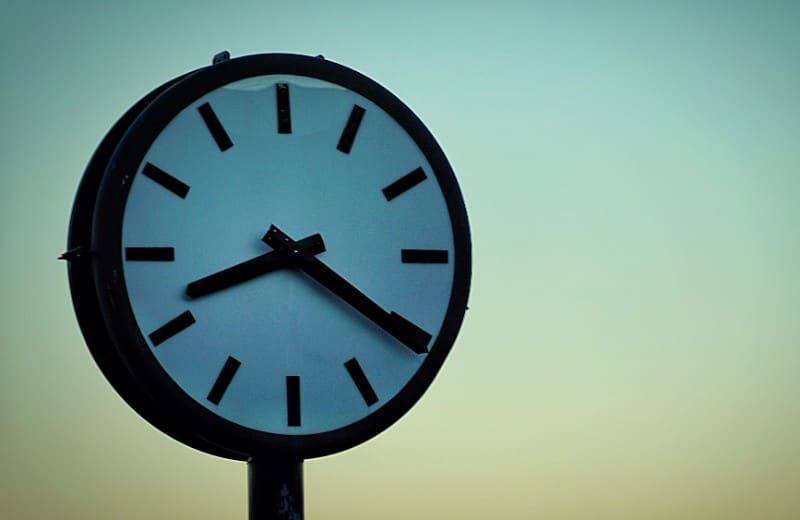A day at a dog show can be a very long day.
Exhibitors get up before dawn, grab a cup of coffee, pack up the gear, load up the dogs, drive for several hours, arrive at the showgrounds, find a suitable parking spot, unpack and set up the gear, feed and exercise the dogs, grab another coffee, and… wait for the day to begin.
Depending on when the alarm clock was set, the amount of gear that’s needed, the number of dogs being shown (and which breeds), and how much coffee has been consumed, it’s understandable that some exhibitors might feel a little defeated before the competition has even begun. Many are still tired at 8 a.m., despite having a four-hour head start to the day and several cups of coffee consumed. Thankfully, there’s always more coffee brewing somewhere.
In the US, every “dog show day” officially begins with the National Anthem; either a pre-recorded broadcast is played or an a cappella rendition is sung live (often with remarkable skill, considering the hour). The applause that follows is immediately superseded by shouting from the ring stewards: “Six- to nine-month puppy dogs, into the ring, please!”
With these exclamations, the show has officially begun and the day proceeds (generally, like clockwork) until Best in Show has been awarded—or until the last Standard Poodle has been put to bed.
Increasingly, however, dog show folk are bemoaning the demands put on them by the ever-lengthening show days. In a few instances, some events have run as late as 9 p.m. The protracted show schedules derive from several causes, including the expanded number of recognized breeds that require adjudication and the increased number of non-regular competitions that are offered.
The premium list for one recent cluster, for example, promoted so many performance events, trials, and tests that the all-breed competition seemed like just another activity. This particular series of shows also offered the National Owner-Handled Series, Pee Wee Competition, and Best Bred-By Exhibitor as well as several health clinics and screenings.
Though some exhibitors will undoubtedly view this kind of jam-packed weekend as a great opportunity to compete for points and titles while completing a few necessary obligations (a kind of one-stop shop experience), others would be justified for thinking that a day spent running from ring to trial to test to ring to ring to ring… doesn’t allow time for connecting with fellow exhibitors in any meaningful way.
The proliferation of so many special attractions has certainly increased entries at shows where they’re offered, but their inclusion can be viewed as a quick fix to a slow-moving problem. These “non-regular” events do provide an incentive to some (clubs, superintendents, judges, and AKC, for example), but there is a cost to purebred dogs. As all-breed clubs expand the kinds of events on offer at their shows, the value of exhibiting breeding stock continues to erode. It is not unreasonable to think that the only place exhibitors will be able to find majors in the future will be at a few highly publicized all-breed shows, limited breed shows, and specialties. (Maybe we’re already there?)
For those who remember dog shows before smart phones, the complaint is often made that today’s exhibitors no longer spend much time genuinely “talking dogs.” This criticism is certainly valid, but in days gone by exhibitors had no choice but to interact (in person) with their fellow exhibitors. There wasn’t much else to do at a dog show. Even in the days when most benched shows had become a thing of the past, exhibitors still socialized in between Breed and Group judging.
These casual interactions often led to in-depth conversations that allowed participants to interact as both student and teacher. Mentoring wasn’t “a thing.” It just happened. Back then, nobody entered Breed and Fast CAT or Agility or NOHS because those events didn’t exist. The only alternative to Conformation was Obedience, and the prevailing belief at the time was that a dog shouldn’t participate in both events on the same day. My, how things have changed!
Of course, nothing ever stays the same. The changes that have occurred in the sport over the last 30 years reflect larger societal changes spurred on by advances in technology. For example, most exhibitors today register their dogs online instead of through the mail. Show entries and hotel reservations are made online, too. Win photos are ordered online, dog food is ordered online, and even medication is ordered online.
In fact, virtually anything that can be purchased may be ordered online and delivered directly to any front door in America. A hot meal can even be delivered to a hotel room (or showground). Today, nobody needs to sit around a bonfire after the show talking about breed type when DoorDash can deliver Panera Bread, and Yellowstone can be streamed on Netflix. (Psst, it can’t.)
Despite all the conveniences that are available to almost every exhibitor today, there never seems to be enough time to simply relax in between all the dog show demands and distractions. Everyone always seems “crazy busy.” There’s always another event to run off to and another ring steward calling—increasingly in the evening hours. But all of this running around is bound to lead to exhibitor fatigue sooner or later, and once the exhaustion has reached a tipping point there won’t be a special exhibition or ranking system enticing enough to compel exhibitors to continue to make the investment, week in and week out. Sooner or later, the miles and the migraines (not to mention the knee replacements) will prove to be too much.
Meaningful interactions still take place at dog shows, of course, but they usually require a bit more effort than in years past. At dog events these days, the smartest way to enjoy any leisure time that remains is to put down the smart phone and pull up a chair. The top news story or social media post isn’t nearly as interesting as the conversations that await exhibitors around every ring where a well-respected judge is evaluating an entry in which both majors are at stake.
It’s important to remember that despite the many changes that have been made to the sport of dogs and within the world at large, dog people are still dog people. Everyone enjoys “talking dogs” and there’s no better way to pass the time, especially when the dog show seems to go on and on and on…









